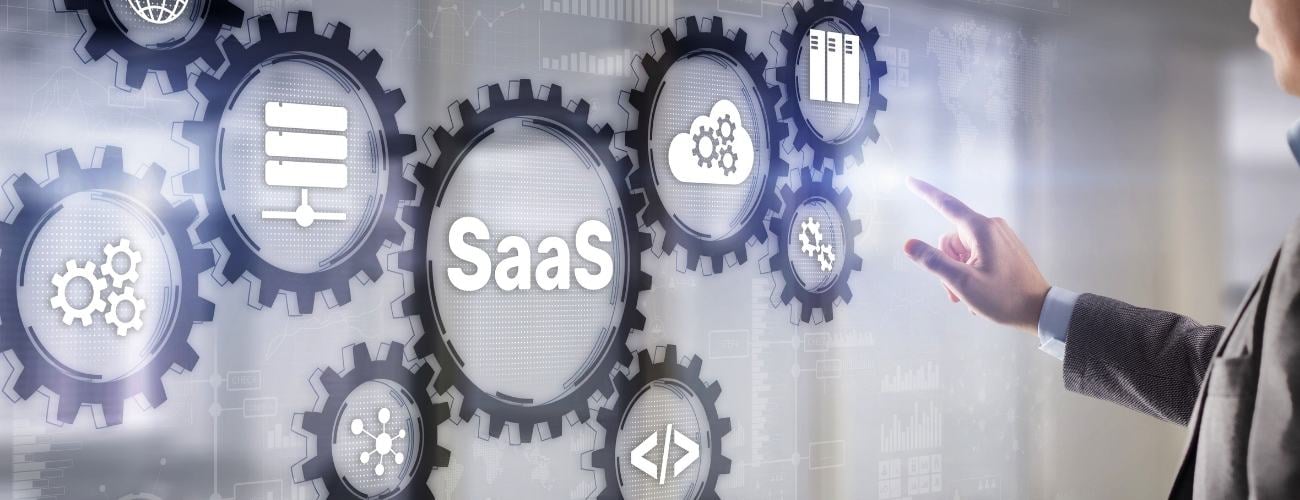SaaS services, or Software as a Service, are solutions that provide access to software and applications over the Internet, bypassing the need for physical software installation. These services typically operate on a subscription model.
In the dynamic landscape of evolving business needs and cutting-edge technologies, the ways companies harness software are undergoing a transformation. Rather than investing in and installing physical software, many organizations are gravitating towards cloud-based solutions, such as Software as a Service (SaaS). This distribution model comes packed with numerous advantages.

Software as a Service (SaaS) is a software licensing and distribution model that delivers applications over the Internet as a service. In simpler terms, SaaS allows users to access applications by paying a periodic subscription fee, making it the ideal alternative for software like instant messaging and customer relationship management (CRM).
The concept of centralizing the hosting of business applications has been around since the 1960s. However, it gained significant momentum in the 1990s with the growth of the Internet and the evolution of Application Service Providers (ASPs), third-party applications managed and hosted by a provider.
In essence, SaaS is an evolution of the ASP model: users can use the software without installing it, as the program is instantly distributed over the Internet through the cloud.
While Software-as-a-Service is probably the most well-known, it's just one of several cloud computing alternatives for IT processes. Other "as-a-Service" options include:
Infrastructure as a Service (IaaS): The provider hosts hardware, software, storage, and other infrastructure components;
Platform as a Service (PaaS): Allows customers to develop, run, and manage applications without dealing with development and launch infrastructure;
Managed Software-as-a-Service (MSaaS): IT professionals support and keep applications up to date;
Desktop-as-a-Service (DaaS): Virtual desktop infrastructure is outsourced to a third-party provider;
Database-as-a-Service (DBaaS): Users access a database without downloading or hosting it themselves;
Security-as-a-Service (SECaaS): A service provider grants access to security services through subscription;
Everything as a service (XaaS): Essentially, a convenient package of all "as-a-Service" tools.

Transitioning to the SaaS model offers numerous benefits, including:
Reduced Setup Costs and Infrastructure: No capital expenses to amortize in the budget. Compared to traditional software packages, SaaS can be more cost-effective, ensuring users always have the latest software without upgrade and maintenance fees.
Accessibility: Services can be accessed from any connected device, facilitating remote work, reducing employee productivity loss, and requiring minimal office space.
Quick implementation: Configuration is easy and fast compared to in-house IT. Most SaaS solutions are designed to require little to no expertise, allowing initial users to start using the applications immediately.
The future of these solutions looks promising, especially with the increasing trend of remote work and the popularity of mobile devices. As technologies like artificial intelligence (AI) and machine learning gain widespread adoption, SaaS capabilities and functionalities will continue to evolve, delivering new and broader benefits to users..
SaaS services, or Software as a Service, are solutions that provide access to software and applications over the Internet, bypassing the need for physical software installation. These services typically operate on a subscription model.
IaaS, PaaS, and SaaS represent three distinct cloud service models:
IaaS (Infrastructure as a Service): Offers virtualized computing infrastructures.
PaaS (Platform as a Service): Provides a platform and environment for developers to build applications and services.
SaaS (Software as a Service): Grants access to software and applications via the Internet.
PaaS, or Platform as a Service, is a cloud service model offering a platform and environment for developers to create applications and services. By eliminating the need for developers to manage underlying computing infrastructure, PaaS allows them to focus on application creation and execution.
IaaS, or Infrastructure as a Service, is a cloud service model delivering virtualized computing infrastructures, encompassing servers, storage, networks, and operating systems. By removing the burden of managing physical hardware, IaaS enables businesses to concentrate on their core operations.
The advantages of SaaS are manifold, featuring reduced setup costs, ubiquitous access, swift deployment, and scalability. Additionally, SaaS ensures users always have access to the latest software version, alleviating concerns about updates and maintenance.
The future of SaaS appears exceptionally promising. With the rise of remote work and the surging popularity of mobile devices, the demand for SaaS solutions is poised for substantial growth. Furthermore, as technologies like artificial intelligence (AI) and machine learning become more ubiquitous, the capabilities and functionalities of SaaS products will continue to evolve and improve, ushering in new and expansive benefits for users. Stay tuned for the exciting developments in the world of SaaS!